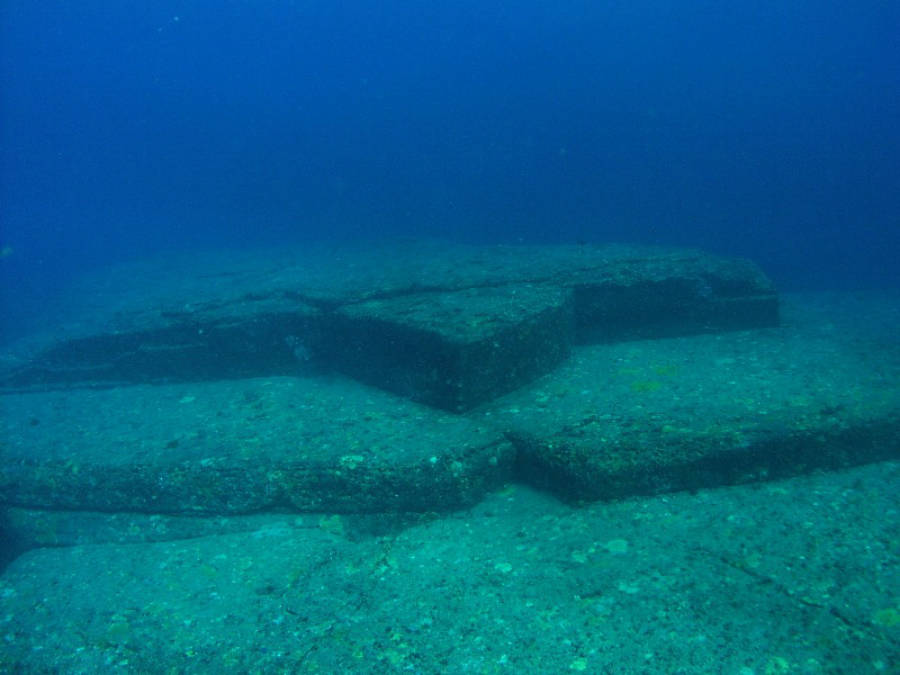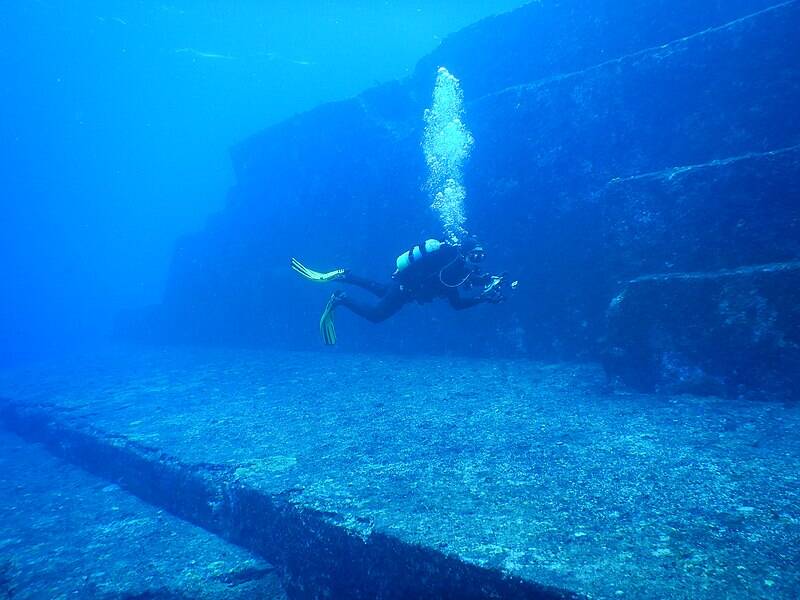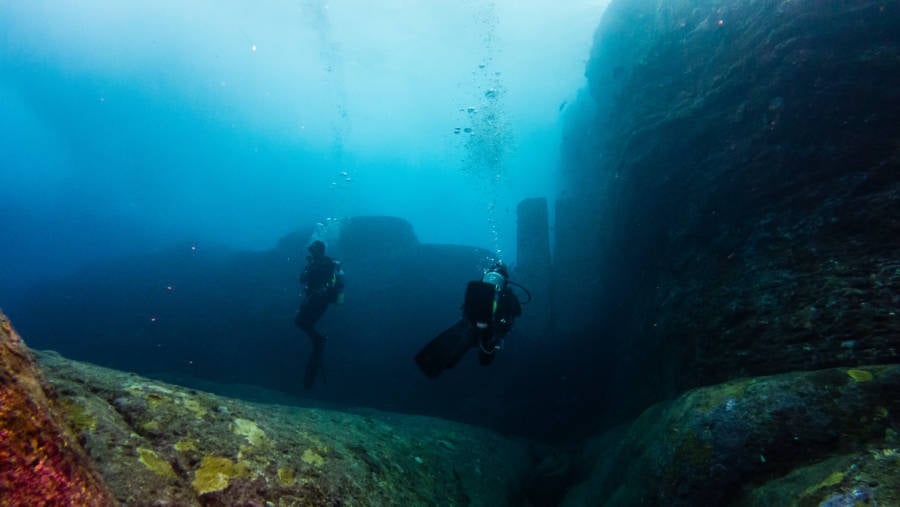The Yonaguni Monument wasn't discovered until 1987, and in that short time, it's already become a tourist attraction off Yonaguni Island.

Masahiro Kaji/Wikimedia Commons“The Turtle”, one of the many formations on the Yonaguni Monument.
For decades, people thought that the most impressive natural sight you could see near the Japanese island of Yonaguni were the frenzy hammerhead sharks that circled the shores during the cold winter months.
That all changed in 1987 when local scuba diving instructor and director of Yonaguni-Cho Tourism Association Kihachiro Aratake discovered something underwater that was far more interesting than sharks.
According to a paper written by American author and lecturer John West titled “Diving For Lemuria,” Aratake was scouting out new spots to take his clients when he stumbled upon an underwater rock formation that took his breath away.
It was a gigantic “cliff-face cut into a series of immense geometric terraces, with broad, flat horizontal surfaces, and sheer vertical stone risers,” West writes. “It might have served as a grandstand for the retinue of whoever the Japanese equivalent of Poseidon may be; a place where gods convened to watch titanic underwater spectaculars.”

Wikimedia CommonsDivers checking out what is often described as the main terrace of Yonaguni Monument.
Underwater Mystery
The formation is mostly composed of sandstone and mudstone, while various structures connect to the rock beneath them. The most prominent part of the Yonaguni Monument is a giant slab of rock that is nearly 500 feet long, 130 feet wide and 90 feet tall. The distance from the surface of the water to the top of the monument is around 16 feet.
What makes many people — including some scientists — believe that the monument is more than just a giant piece of rock underwater is the variety of details that point to human influence. There are what looks like couple of pillars, a stone column, a wall that is 33 feet wide, a road, and even a star-shaped platform.
Not long after Aratake’s discovery in 1990, a group of scientists from the University of the Ryūkyūs made an expedition to visit what was being called the Yonaguni Monument.
A Ryūkyūs professor named Masaaki Kimura was among them. A marine seismologist, he was mesmerized by forgotten and lost ancient civilizations—including Lemuria, a legendary land rumored to have drowned in the Pacific Ocean centuries ago.
The Japanese Atlantis
Kimura visited the Yonaguni Monument repeatedly and meticulously studied it until concluding that it was either entirely humanmade or at least enhanced by humans at some point. He estimated that it was around 2,000 years old and would not have been underwater when first constructed.
However, the mudstones that the monument is made of are believed to be over 20 million years old.

Wikimedia CommonsA group of diners line up to show the size of the Yonaguni Monument.
Still, the professor believed. He even went so far as to argue that the whole structure might be evidence for the lost Pacific continent of Mu, and that he can point to a pyramid, castles, roads, and a stadium in the monument that are remnants of the 1st-century country of Yamatai.
If they are ruins of Yamatai, then Kimura believes they date back at least 5,000 years due to evidence in underwater caves he found while diving around the monument. He also claims to be researching a relief on the site that has a painting of what resembles a cow.
But again, this has never been proven.
Natural Beauty
While it’s not officially a sunken city, the Yonaguni Monument certainly draws tourists like one. Divers often brave the ocean’s strong currents that could sweep them away to catch a glimpse of its towering, deep-sea walls.
To this day, no one is quite sure what the Yonaguni Monument is or where it came from, but there are plenty of logical theories the structure. Some people believe it is merely a unique natural formation due to the many parallel fractures and joints on the rock.
Since Yonaguni is in an earthquake-prone area, it would make sense for these fractures to form. The walls on the monument could only be platforms that fell into a vertical position due to erosion.
While there is evidence of communities of stone-workers in prehistoric Yonaguni, many scientists claim that they wouldn’t be able to make giant stone sculptures.

Divers explore the monument.
Still, there’s also ample evidence that the monument is humanmade. Some of the rock’s details seem too exact and too precise for natural methods, like a trench that features two 90 degree angles, and two megaliths with straight edges and sharp corners. Erosion usually leads to softened and curved edges. And when’s the last time anyone’s seen a perfectly square rock?
There’s also a triangular depression in the monument with two large round holes beside it, which could be proof of attempts to separate the rock using wedges.
Origins Unknown
Despite its ever-growing popularity and the mystery that surrounds it, the Yonaguni Monument has never been recognized by the Japanese Agency for Cultural Affairs or the government of Okinawa Prefecture as an important historical artifact. More research still needs to be done to determine what its true origins are.
So it’s of no real surprise that to this day, no one can agree on what the Yonaguni Monument is. But despite its mysterious and slightly controversial history, divers around the world still believe that it’s way more interesting to see than the sharks.
If you like reading about lost cities and buildings, check out the story of the recently discovered Mayan “megalopolis” and learn more about the Canadian settlement that’s older than the pyramids.





